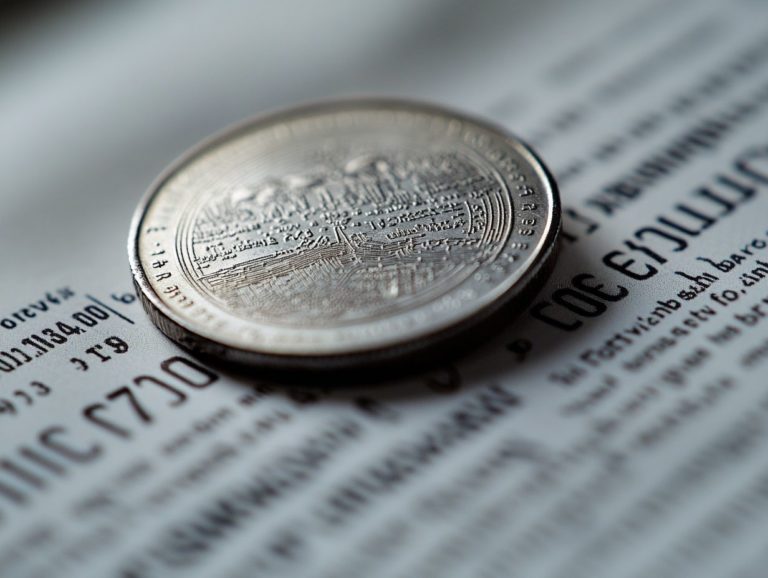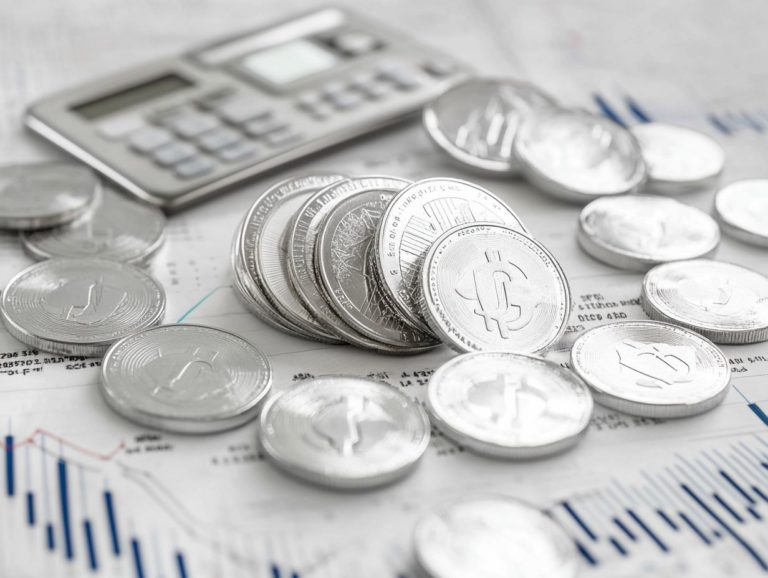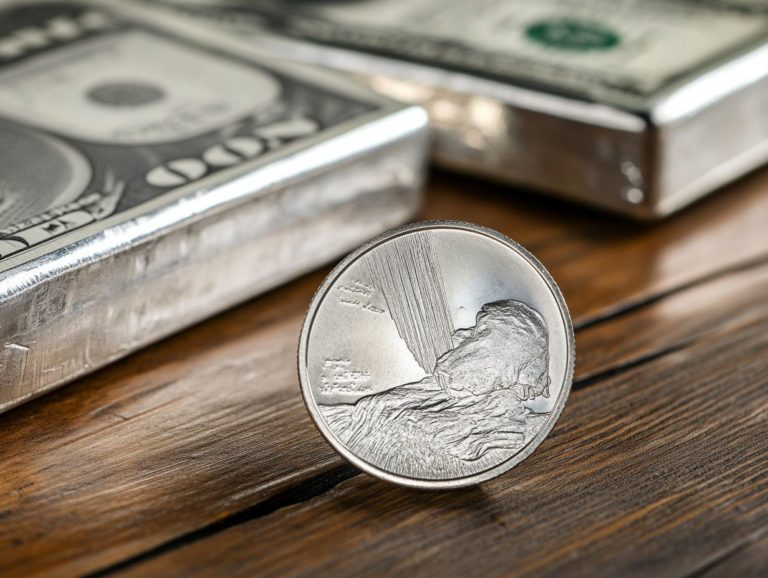The Environmental Impact of Silver Mining
Let’s dive into the serious impacts silver mining has on our planet! Silver mining has historically been a cornerstone industry, providing a precious metal that plays a crucial role in technology, jewelry, and many other applications. However, beneath its dazzling exterior lies a troubling truth: significant environmental concerns.
This exploration reveals the profound impact of silver mining on our ecosystems, addressing critical issues such as water, land, and air pollution. It will also examine the laws and rules governing the industry and its initiatives aimed at reducing these harmful effects.
Alternative solutions like recycling and exploring new sources will also be highlighted to pave the way for a more sustainable future. Engage with us as we unravel the complexities of silver mining and its environmental footprint.
Contents
- Key Takeaways:
- Environmental Concerns
- Regulations and Mitigation Efforts
- Alternative Solutions to Silver Mining
- Frequently Asked Questions
- What is the environmental impact of silver mining?
- What are some specific environmental impacts of silver mining?
- How does silver mining contribute to tree cutting?
- What types of air and water pollution are caused by silver mining?
- Can silver mining lead to soil erosion?
- What are some potential solutions to reduce the environmental impact of silver mining?
Key Takeaways:
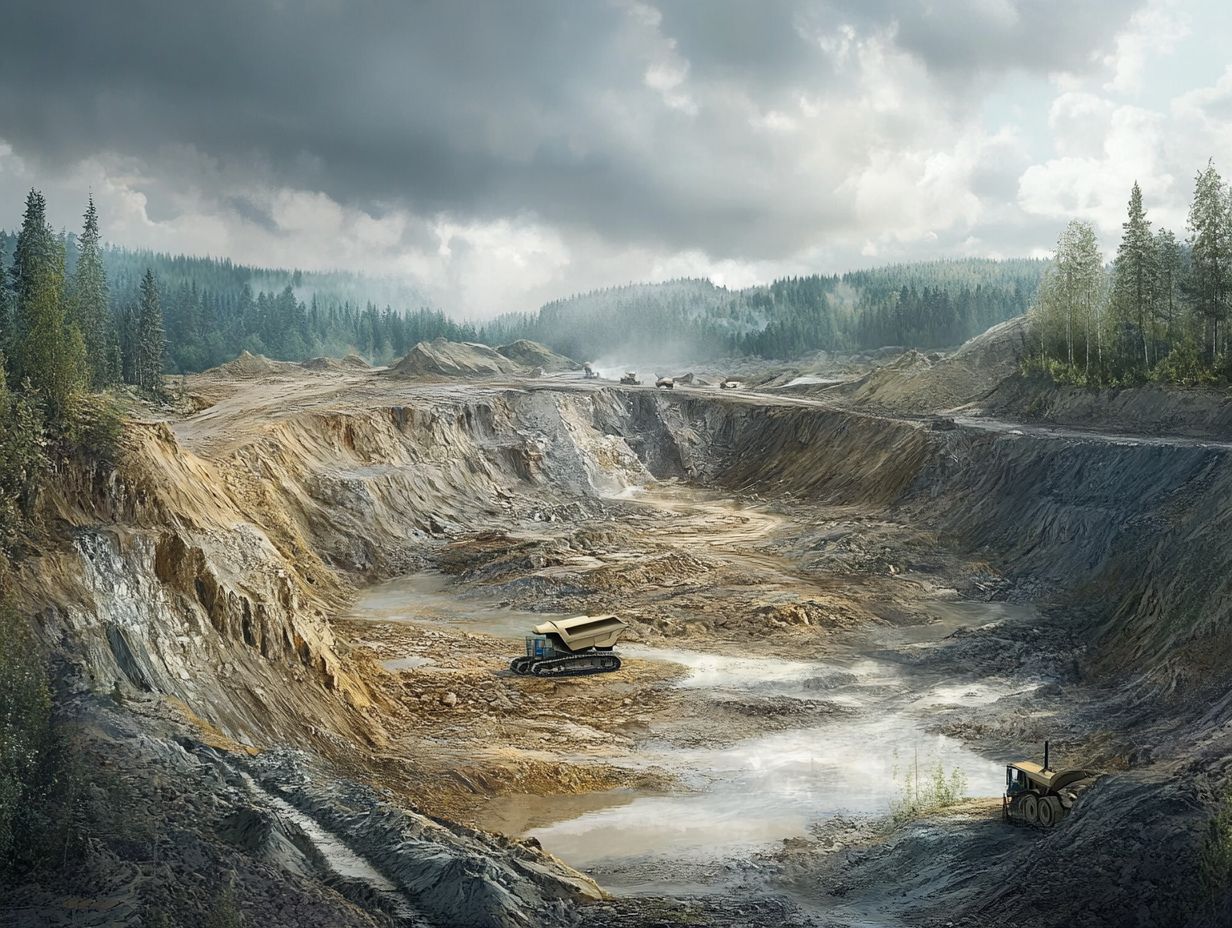
- Silver mining significantly harms the environment through water, land, and air pollution.
- Government laws and industry efforts are vital in reducing the environmental impacts of silver mining.
- Recycling and exploring alternative sources of silver can help cut down the environmental damage caused by mining.
Overview of the Industry
The silver mining industry is a pivotal sector that profoundly influences both the global economy and local communities. It plays a significant role in producing precious jewelry, electronic goods, and various industrial applications.
With a rich history that spans centuries, this industry not only drives technological advancements but also supports regional economies by creating jobs and assisting small businesses. Key players in this sector, from mining conglomerates to smaller enterprises, are increasingly aware of their responsibilities for social and environmental governance.
They are embracing innovative strategies to minimize carbon emissions and reduce water usage essential components in the pursuit of sustainable mining.
Collaboration between industries and local communities fosters a transparent dialogue, helping to navigate the complexities of mineral extraction. This ensures that the prosperity generated benefits all parties involved without compromising ecological health or social well-being.
Environmental Concerns
Environmental concerns surrounding the silver mining industry highlight the significant impacts on ecosystems and local communities. We must address issues like water pollution, land destruction, and air pollution.
These matters are crucial for fostering sustainable practices and play a key role in raising consumer awareness about the repercussions of silver mining on our precious natural resources.
Water Pollution
Silver mining operations create pressing water pollution issues by releasing harmful chemicals and heavy metals into nearby waterways. This not only disrupts ecosystems but also threatens the communities relying on these water sources. It is essential for mining companies to adopt responsible practices that mitigate these impacts and promote environmental sustainability.
This degradation often stems from improper waste management and negligence of safety protocols, increasing risks for aquatic life and the quality of drinking water. When companies disregard environmental regulations, they harm biodiversity and endanger the health and livelihoods of nearby populations. The consequences of such pollution can range from contaminated fish stocks to heightened health issues among local residents.
It s crucial for mining entities to invest in cleaner extraction technologies and implement rigorous monitoring processes to ensure their operations meet established environmental standards. By prioritizing sustainability, these companies can protect vital water resources and create a healthier environment for everyone involved.
Land Destruction
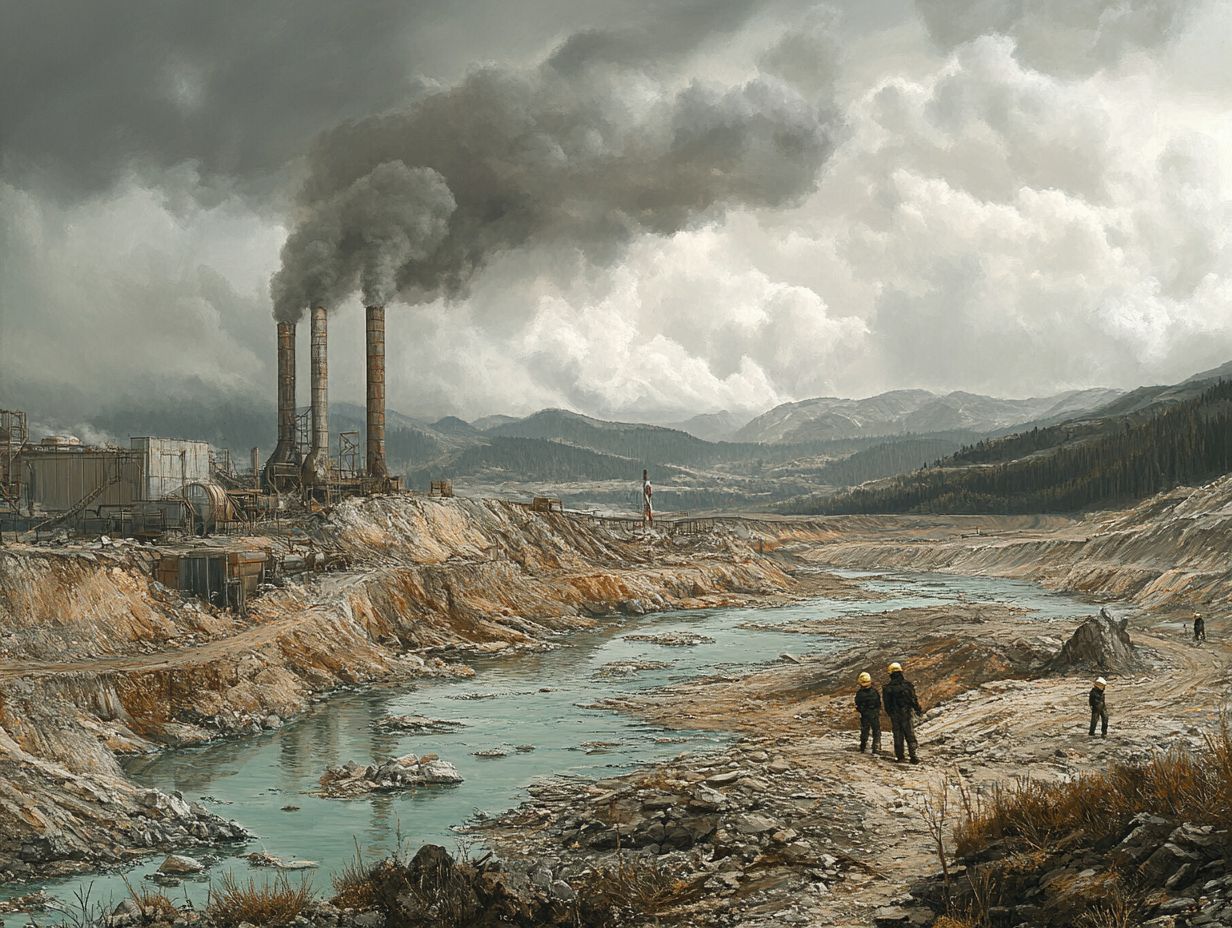
The destruction of land caused by silver mining operations significantly contributes to biodiversity loss and habitat degradation. This poses a serious threat to local ecosystems and wildlife. We must address these destructive practices to promote better environmental sustainability.
This impact reaches far beyond the immediate mining areas. Habitat fragmentation breaks up natural areas where animals live, disrupting migratory patterns and ecological balances. In regions where silver mining is prevalent, such as the Andes in South America, research suggests that up to 80% of local flora and fauna could face extinction if these harmful practices continue unchecked. Understanding the environmental impacts of gold mining is crucial in addressing these issues.
Chemical runoff from mining sites often contaminates nearby waterways. This poses further risks to aquatic life.
Adopting sustainable mining practices is crucial. These practices can help mitigate the damaging effects, ensuring that natural habitats and the communities that rely on them can thrive for generations to come.
Air Pollution
Air pollution is a significant consequence of silver mining. The mining processes can release harmful dust and emissions that degrade air quality and adversely affect human health and local communities. Mining companies must adhere to stringent environmental standards to mitigate these risks.
When silver is extracted from the earth, various toxic substances, such as particulate matter and heavy metals like lead and mercury, can enter the atmosphere. These pollutants pose serious public health threats, raising the incidence of respiratory diseases and cardiovascular issues among nearby populations. Additionally, it’s important to consider the environmental impact of platinum mining as it shares similar challenges.
Long-term exposure to contaminated air can lead to chronic health conditions, significantly impacting one s quality of life. Effective regulations and robust monitoring systems are crucial for compliance and for safeguarding community well-being and protecting the surrounding ecosystem.
By adopting sustainable mining practices, companies can dramatically reduce harmful emissions, contributing to cleaner air and a healthier environment for everyone.
Regulations and Mitigation Efforts
Considering the environmental concerns tied to silver mining, both government regulations and industry initiatives have emerged to champion sustainable practices and mitigate adverse impacts. This collaborative effort aims to elevate consumer awareness and ensure that mining companies commit to responsible methods in their operations.
Government Regulations
Government regulations play a crucial role in enforcing environmental standards and ensuring that mining companies commit to sustainable practices. These regulations protect local communities and ecosystems, fostering social systems that prioritize responsible mining.
For instance, regulations like the National Environmental Policy Act (NEPA) and the Clean Water Act set essential guidelines to mitigate environmental damage during silver extraction processes. Their goals are to minimize impacts on wildlife habitats and protect water quality from toxic runoff.
We expect mining companies to conduct comprehensive environmental assessments and adopt practices designed to reduce emissions and waste.
These regulations hold corporations accountable and enhance community involvement in decision-making processes. This enables local populations to express their concerns and ensures that their health and livelihoods are prioritized.
Industry Efforts

Your active participation in industry efforts can make a real difference! Mining companies are recognizing the importance of community development and environmental responsibility.
Many organizations now embrace innovative mining techniques. These practices reduce water usage and limit greenhouse gas emissions.
Companies like Pan American Silver lead the way by integrating renewable energy sources into their operations. This significantly decreases their carbon footprint.
Partnerships with local communities focus on educational programs and environmental rehabilitation projects. These efforts ensure that silver mining benefits not just the economy but also local populations.
These case studies show that sustainability is becoming a core component of corporate strategy. A responsible mining future is within reach, and you can be proud to support it.
Alternative Solutions to Silver Mining
As awareness of environmental issues grows, alternative solutions to silver mining, such as recycling and reusing silver, are becoming essential. These practices help minimize the impact on the environment.
By exploring other sources of silver and adopting sustainable technologies, you can meet consumer demand while protecting precious natural resources.
Recycling and Reusing Silver
Recycling and reusing silver are effective ways to reduce the environmental impact of mining. These practices conserve valuable resources and promote a circular economy.
The recycling process includes collecting, refining, and reintroducing silver back into the market. Remarkably, it requires only about 20% of the energy needed to extract new silver from ore.
About 30% of the silver used each year is recycled, showing its immense potential. Your choices as a consumer can enhance these statistics.
When you support recycled products, you contribute to increased demand and encourage manufacturers to adopt responsible practices. Every piece of jewelry or electronic device contains recyclable silver.
Exploring Other Sources of Silver
Exploring alternative sources of silver, beyond traditional mining, is crucial for environmental sustainability. Adopting a responsible approach to resource extraction helps reduce reliance on conventional methods.
Innovative strategies like urban mining reclaiming silver from electronic waste and using biotechnological methods to extract metals offer promising alternatives. These approaches lessen the impact on the environment and contribute to a circular economy.
By prioritizing green technologies, you can help reduce harmful emissions and preserve natural habitats. Embracing these sustainable solutions benefits both the planet and future generations.
Frequently Asked Questions
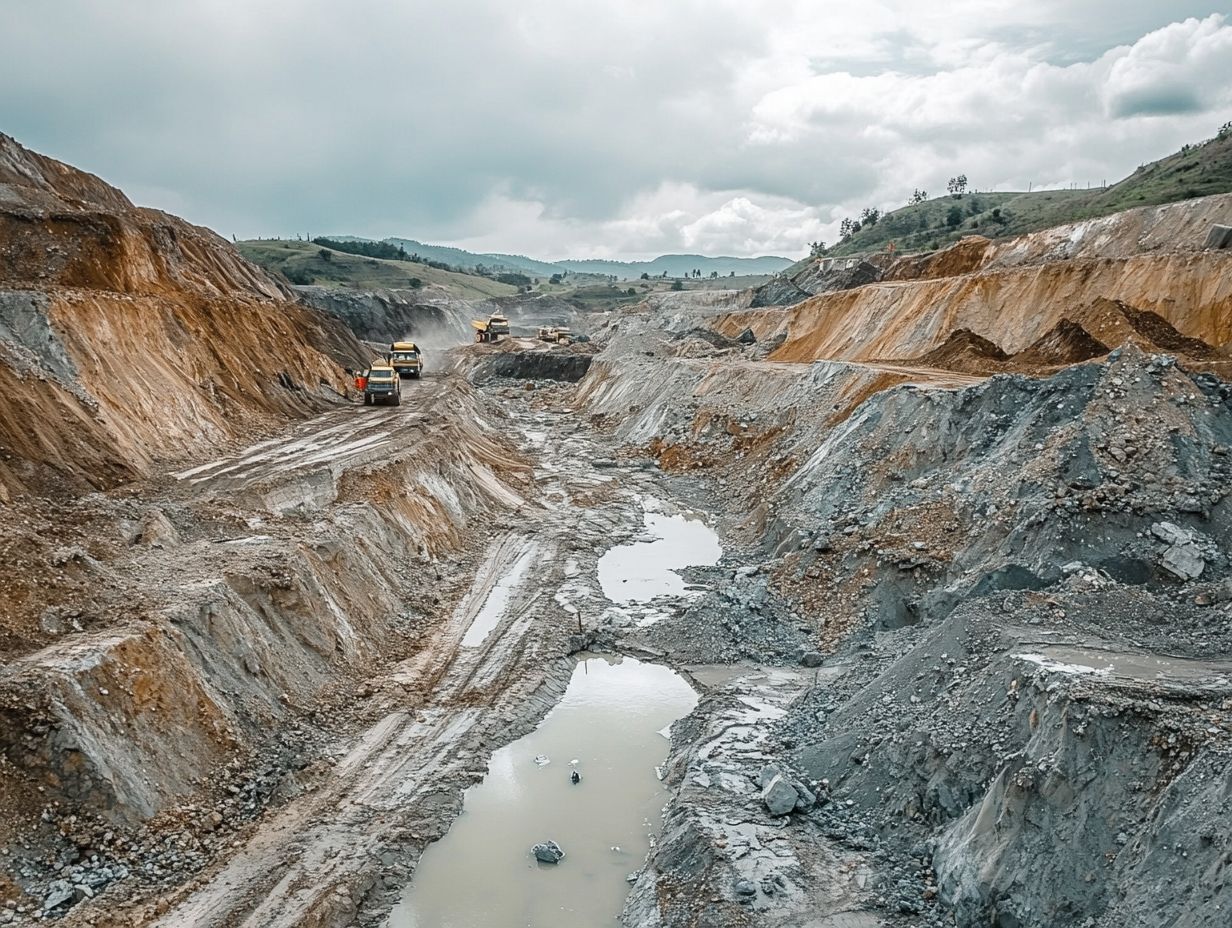
What is the environmental impact of silver mining?
The environmental impact of silver mining refers to the negative effects of extracting silver from the earth. This process can harm the surrounding environment and ecosystems.
What are some specific environmental impacts of silver mining?
Silver mining has serious environmental impacts. It causes tree cutting, air and water pollution, and soil erosion.
How does silver mining contribute to tree cutting?
Silver mining often requires cutting down large areas of trees to reach mineral deposits. This destroys habitats for plants and animals, leading to a loss of biodiversity.
What types of air and water pollution are caused by silver mining?
Silver mining releases harmful gases, including sulfur dioxide. These gases can lead to acid rain, which harms local communities and ecosystems.
It also produces contaminated wastewater that can pollute local water sources, threatening aquatic life.
Can silver mining lead to soil erosion?
Yes, land disturbance from silver mining can cause soil erosion. Removing plants and topsoil makes the land more vulnerable to erosion from wind and rain.
What are some potential solutions to reduce the environmental impact of silver mining?
Implementing sustainable mining practices can help. Reducing toxic chemicals and recycling materials are effective strategies.
Governments and mining companies should also collaborate to restore and reforest affected areas. This will minimize environmental damage.










